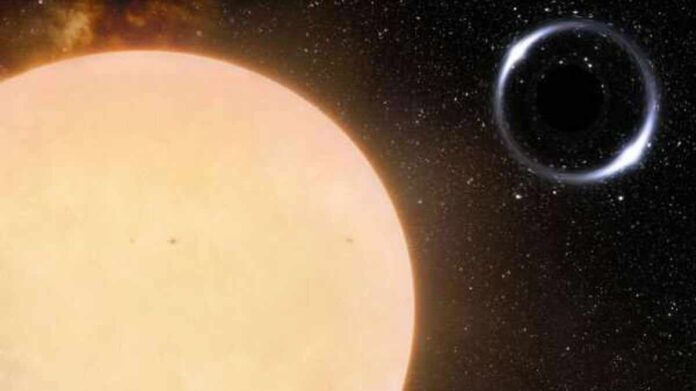Astronomers announced on Friday that they had discovered the closest known black hole, almost but not quite in time for Halloween. It’s a big deal, a yawning void ten times the size of the sun, orbiting as far away from its own star as the Earth does from ours.
But don’t worry: this black hole is 1,600 light-years away in the constellation Ophiuchus, while the next closest known black hole is about 3,000 light-years away in the constellation Monoceros. Aside from its proximity, what distinguishes this new black hole from the 20 or so others already identified in our Milky Way galaxy is that it isn’t doing anything — neither drawing the nearby star to its doom nor gravitationally consuming everything nearby. Instead, the black hole is dormant, a silent killer waiting for the space currents to feed it.
According to Einstein’s theory of general relativity, black holes are objects so dense that not even light can escape them. This makes them the most fascinating and violent phenomena in nature; when they feed, they can become the most brilliant objects in the universe, ripping and heating gas, dust, and even smaller stars to incandescence, spewing energy as they approach the gates of eternity.
Scientists aren’t sure where supermassive black holes, which are millions of billions of times more massive than the sun, come from. Smaller black holes are thought to form from massive stars that have collapsed after reaching the end of their thermonuclear lives. The Milky Way most likely contains millions of black holes. They are typically identified by the X-rays they emit as they strip gas from their companions in double-star systems.
But what about dormant holes, those that aren’t coughing up fire right now? For four years, Kareem El-Badry, an astrophysicist at the Harvard-Smithsonian Center for Astrophysics, has been looking for such hidden demons. He discovered this black hole by analysing data from the European Space Agency’s GAIA spacecraft, which has been tracking the positions, motions, and other properties of millions of stars in the Milky Way with extreme precision.
Dr. El-Badry and his colleagues discovered a star that was jittering strangely, as if under the gravitational influence of an invisible companion. To conduct additional research, the researchers rented the Gemini North telescope on Mauna Kea in Hawaii, which could measure the speed and period of the wobble and thus determine the relative masses of the objects involved. The method is similar to how astronomers analyse star wobbles to detect the presence of orbiting exoplanets — except this time the quarry was much larger.
Their findings and subsequent calculations supported the existence of a black hole of 10 solar masses surrounded by a star similar to our own. Gaia BH1 is the name they gave it.
“Take the solar system, put a black hole where the sun is, and the sun where the Earth is, and you get this system,” Dr. El-Badry explained in a news release issued by the National Optical and Infrared Laboratory, which operates the Gemini North Telescope.
“This is the nearest known black hole by a factor of three,” he and his co-authors wrote in a paper published on Wednesday in the Monthly Notices of the Royal Astronomical Society. Astronomers said the new discovery called into question their assumed understanding of how such binary star systems evolved. This black hole’s progenitor must have been a star with a mass of about 20 solar masses. According to current theories, the star’s death and subsequent black hole formation would have involved a supernova explosion and other processes that would have severely disrupted the system’s other, smaller star. So, why does the other star seem so ordinary?
“It raises many questions about how this binary system was formed, as well as how many of these dormant black holes there are out there,” Dr. El-Badry said in a news release.

